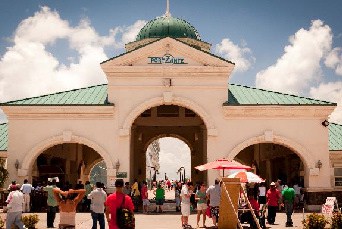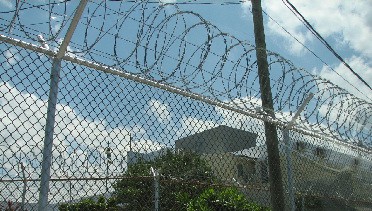St. Kitts and Nevis among the 10 Countries with the Highest Murder Rate

Basseterre, St. Kitts – St. Kitts and Nevis, Jamaica, Belize, Trinidad and Tobago, and St. Vincent and the Grenadines are among the 10 countries with the highest murder rate in the world.
According to the Jamaica Observer, Latin America and the Caribbean make up only eight per cent of the world’s population but accounted for almost 40 per cent of the murders committed worldwide in 2017.
The average murder rate in the region was 24 per 100,000 — almost five times the global average. Jamaica ranked third in the world at 60 per 100,000. Somewhat surprisingly, the US Virgin Islands came in fourth at 47 per 100,000.
Of the 10 countries with the highest murder rate in the world, nine are from the region, five of which are CARICOM states. Of the 50 cities with the highest murder rates, 43 are to be found in the region.
This disparity is not a new phenomenon. Historical data provided by the United Nations and the World Health Organization which go back more than 60 years show that this pattern has long existed, only that the gap has widened, peaking in the early 1990s and contracting modestly since then.
Literally hundreds of studies have been done to identify the causes and dynamics of the high murder rate in Latin America and the Caribbean.
A consistent finding in most of them is that not only are there several factors at play but the combination of factors varies widely, not only among but also within countries and even among cities, towns, and communities in close proximity to each other.
What is even more perplexing is that many of the theories as to what is driving these high murder rates are confounded when tested against empirical data. For example, youth unemployment is identified as a main contributor.
El Salvador and Honduras are among the high murder rate countries but, according to the World Bank, their youth unemployment rates are among the lowest in the region.
The illicit drug trade, especially involving cocaine, is supposed to be another significant driver but two of the three major cocaine- producing countries – Bolivia and Peru – recorded less than 10 murders per 100,000. So did Costa Rica and Panama – two of the major drug transit countries.
According to the US Drug Enforcement Agency, only seven per cent of cocaine shipments travel through the Caribbean corridor.
Yet, five Caribbean countries – Jamaica, St. Kitts and Nevis, Belize, Trinidad and Tobago, and St. Vincent and the Grenadines – are among the 10 countries with the highest murder rate in the world.
Some of the studies carried out have sought to establish a link between poverty levels and high murder rates but they are unable to explain why Bolivia and Nicaragua – the poorest countries in the region apart from Haiti – are among those with low murder rates.
Nor does the data support the linkage between income inequality and high murder rates.
Jamaica’s income inequality, as measured by the GINI Index, is lower than that of Nicaragua, Panama, Chile, Paraguay, and Suriname, but all those countries recorded murder rates in 2017 of less than 10 per 100,000 compared with Jamaica’s 60 per 100,000.
It has been suggested that the region’s proclivity to violence is rooted in its history of warfare among the indigenous pre-Colombian civilisations and the violent political upheavals that characterised much of the 20th century. But if that were so, the African continent should be the most violent region in the world — and it is not.
Another theory frequently advanced to explain the region’s high murder rate is the easy access to guns. The loose gun control laws in the US, for which justification is attributed to its second amendment rights, facilitate the easy illegal flow of guns into the region. Seventy per cent of the guns seized in Jamaica originate from the US. The Center for American Progress estimates that as many as 200,000 guns are smuggled into the region from the US each year.
Much of the illegal flow of weapons over the years was to support internal armed conflicts that have characterised the region’s history. These weapons are still around. But, here again, the comparative data question the validity of the theory.

Several countries that have been through brutal internal conflicts — like Rwanda, Sierra Leone, Burundi, and Chad where the weapons have never been surrendered — are recording murder rates of less than 10 per 100,000.
Nicaragua endured an intense civil war for more than 10 years during which a large quantity of weapons was furnished to the rebel forces through the infamous Iran-Contra arrangement. Its murder rate in 2017 was seven per 100,000.
Some of the drivers of violent crime identified in the studies, such as culture and social disorganisation, pose difficulty in statistical cross-referencing. The prevalence of unstable households and single-parent families has been associated with deviant behaviour that flows into patterns of violence.
There is strong indication that violence as a means of achieving one’s objectives or settling disputes is learned behaviour, starting with being flogged as a child and continuing in the child’s interaction with other children at school and at play. It is seen as part of the socialisation process that becomes normative and accepted.
No one would seek to deny that these many factors contribute in some measure to the high murder rate in the region but they do not sufficiently explain it.
For me, the most persuasive finding of the many studies is the weakness of the state institutions in responding to the incidence of criminal violence. Nothing facilitates criminal behaviour more than the unlikelihood of being caught and punished. Here, the data is compelling.
The number of unsolved murders globally is 40 per cent, but it is 51 per cent in Latin America and the Caribbean. The conviction rate globally is 43 persons for every 100 murders, but less than 20 in this region. The numbers for Jamaica are particularly troubling. The number of unsolved murders is 68 per cent. The conviction rate is less than 10 for every 100 murders.





